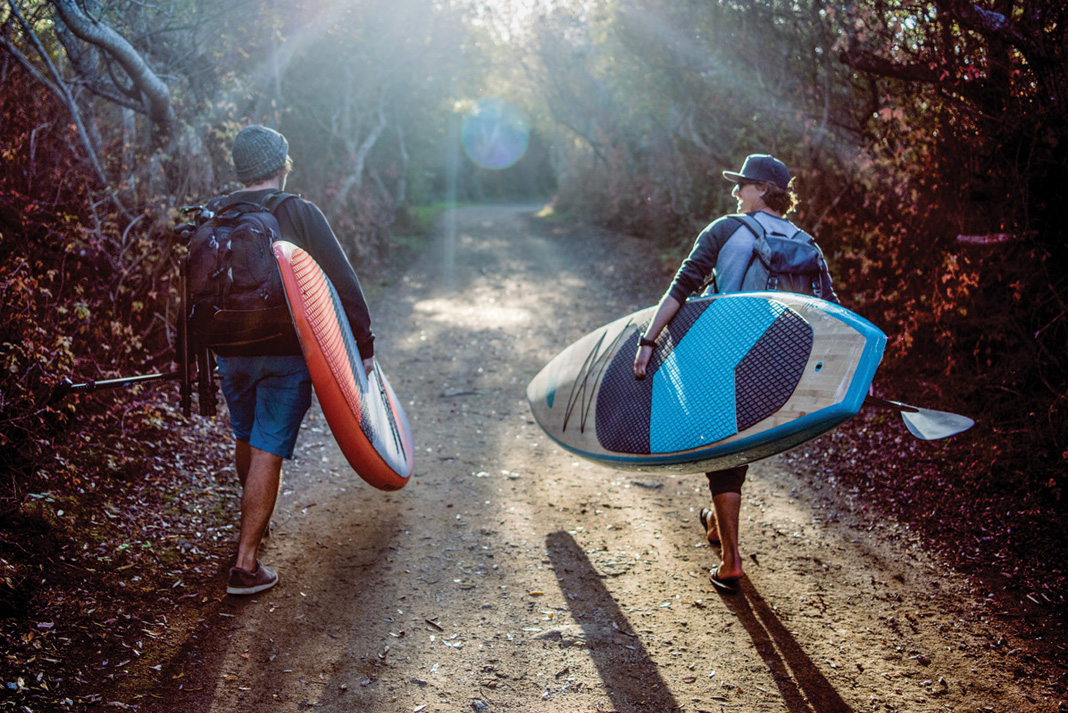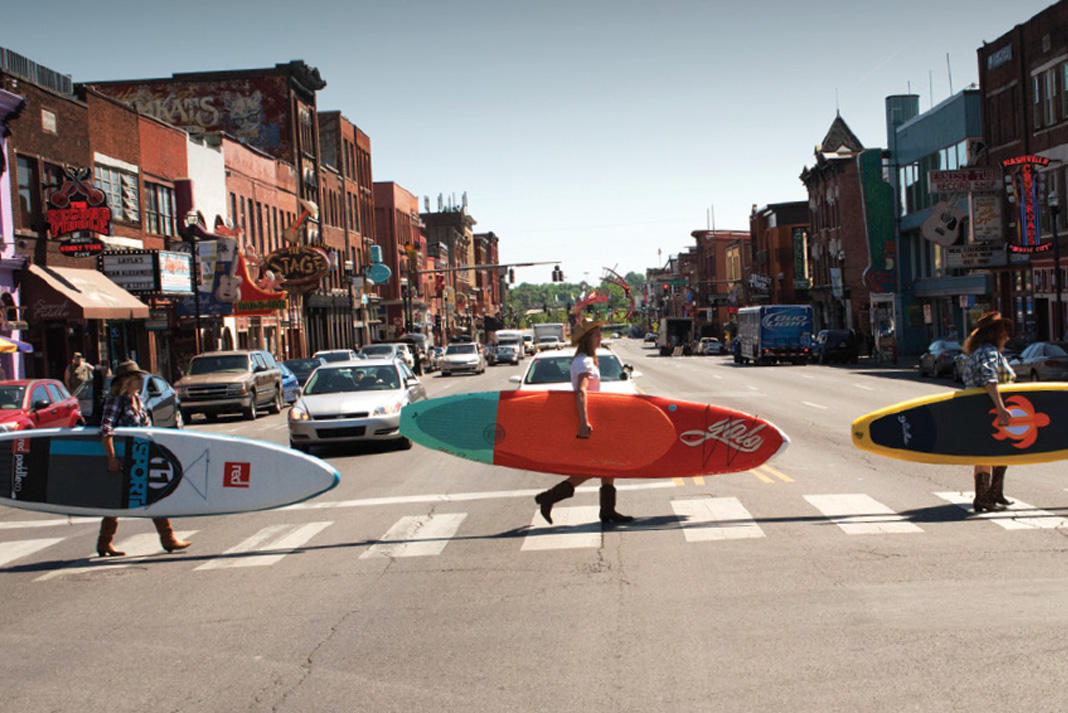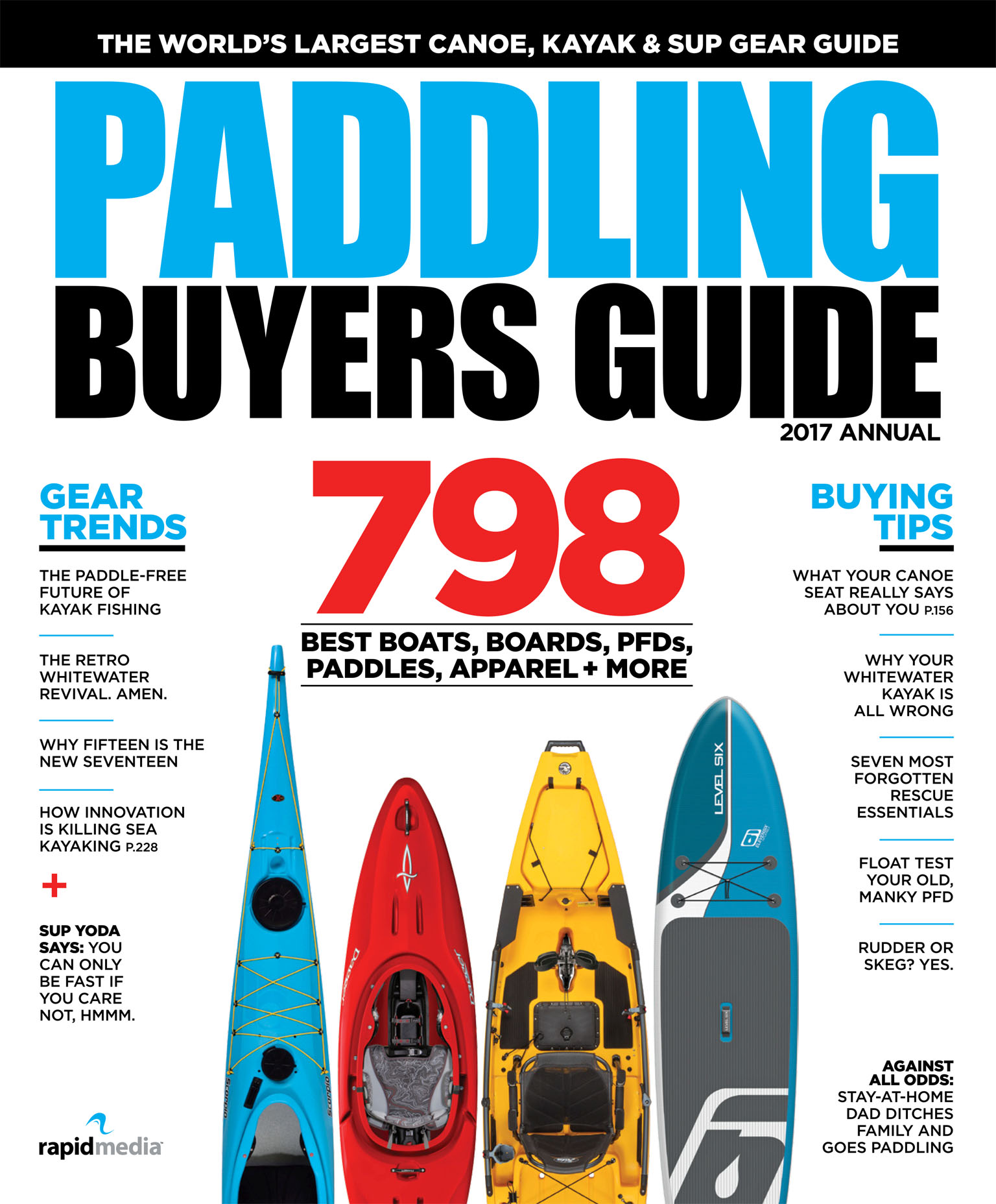The growth and accessibility of standup paddleboarding has led to a crowded marketplace filled with hundreds of brands and models. It can feel overwhelming to shop for a paddleboard, but being aware of these five common board buying mistakes will help you pick the right one.
5 common mistakes to avoid when buying a paddleboard
1 Buying from a big box store
Earlier this year, I was shopping for home supplies when I came face-to-face with a paddleboard display outside of a big box store. They were selling a package deal of foam board, plastic paddle and leash for $400. Good deal? Not likely. Not only would any burgeoning enthusiast out-paddle that board within the season, knock-offs typically offer less durability and questionable performance. Instead, take that $400 and invest it into the high quality board that you’ll want to upgrade to in a couple months anyway. Even better, buy from your local paddle shop, who can share their expertise and introduce you to the local community.

2 Buying before trying
You wouldn’t buy a new car before test-driving it, or buy a new home without getting it inspected, so why would you buy a board without trying it first? Take the time to get some boards on the water, discover what feels right and make your first investment a wise one.
3 Not investing in good instruction
Anyone can buy a board and take it out on the lake to putz around. However, for those who want to achieve a little power, efficiency and finesse, taking a skills class will make the most of your purchase. Too many paddlers spend frustrating weeks attempting to catch a wave or master buoy turns, when a simple one-hour session with a pro would offer the building blocks for success.
4 Defaulting to inflatables
It’s one thing to buy an inflatable because it’s perfect for the type of water and paddling you do, or because you don’t have enough storage space for a rigid board. It’s another thing to default to inflatables because they seem (falsely) “easier” or to avoid the minimal hassle of buying and installing roof racks. Too often I meet people who bought an inflatable without having ever inflated a board. Be assured it takes a bit of time and energy—not too much, but some. Even after using an electric pump most boards need to be finished by hand to achieve performance-level rigidity. Try pumping up a friend’s board before you buy, and then decide if it’s a ritual you want before each paddling session.
5 Sticking with the same board
All of us grow attached to our boards, but as skills increase, sometimes we outgrow our boards. In a recent paddleboard instructor certification class, one of the candidates asked me for tips on his forward stroke. We had just worked on refining stroke technique and he felt that the board was turning too much instead of going straight. What he assumed was flawed technique was instead due to the board—it wasn’t optimal for his height, weight or growing paddling ability. He really should have been paddling a 12.5-foot touring board instead of the 10.5-footer he had purchased. As you refine your skills and explore new types of water, be open to trading in for a new model that suits your growing abilities and interests.
Instructor Anna Levesque runs women’s paddleboarding camps through her company, Mind Body Paddle.
Happy customers. | Feature photo: Ben Horton




 This article was first published in the 2017 Paddling Buyer’s Guide.
This article was first published in the 2017 Paddling Buyer’s Guide. 
